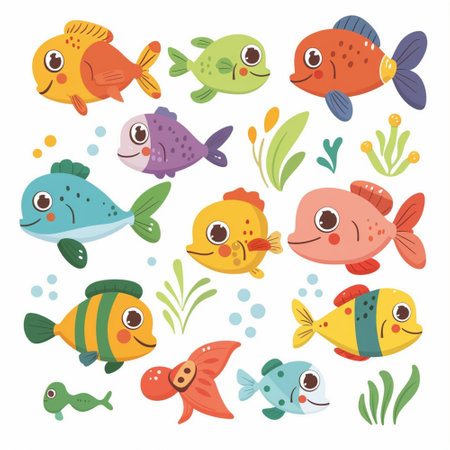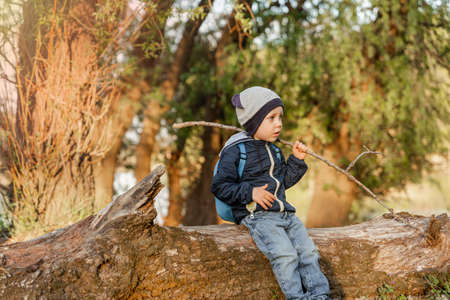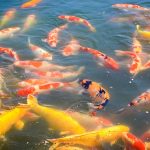1. Choosing the Right Location
Spring is a great time to introduce kids to fishing, and choosing the right spot can make all the difference in creating a fun and stress-free outing. When planning your family fishing trip, look for locations that are safe, easy to access, and designed with families in mind.
Look for Kid-Friendly Fishing Spots
Local ponds, small lakes, and community fishing areas are often the best places to start. These spots are usually stocked with fish and are designed to be beginner-friendly. They also tend to have calm waters, which make it easier for kids to learn how to cast and reel without too much frustration.
What Makes a Spot Family-Friendly?
A good family fishing location should include:
| Feature | Why It Matters |
|---|---|
| Easy Access | No long hikes or rough terrain—parking should be nearby so you can carry gear easily. |
| Restrooms | Essential for younger kids; having facilities close by avoids unnecessary stress. |
| Picnic Areas | A place to relax and eat snacks helps keep everyone happy during breaks. |
| Shaded Areas | Spring sun can still be strong—shade helps keep kids cool and comfortable. |
| Stocked Waters | Lakes or ponds that are regularly stocked with fish increase your chances of catching something, which keeps kids excited and engaged. |
Pro Tip:
Check with your local parks department or fish and wildlife agency—many host free “kids fishing days” in spring where they stock extra fish and provide loaner gear or even mini-lessons!
A Few Great Starter Locations in the U.S.
- Kentucky: Jacobson Park Lake (Lexington) – stocked lake with restrooms and playgrounds nearby
- Tennessee: Shelby Farms Park (Memphis) – multiple ponds, easy access, and picnic areas
- Minnesota: Powderhorn Lake (Minneapolis) – urban lake with shore fishing and family facilities
Selecting the right location lays the foundation for a fun day on the water. A comfortable, kid-friendly environment helps spark a lifelong love of fishing and the outdoors.
2. Gear and Tackle for Young Anglers
When planning a spring fishing trip with kids, choosing the right gear can make all the difference. For young or first-time anglers, it’s best to keep things simple and fun. Spincast reels and lightweight rods are great starter options—theyre easy to use, tangle less, and fit comfortably in smaller hands.
Beginner-Friendly Fishing Gear
| Gear | Why Its Kid-Friendly |
|---|---|
| Spincast Reels | Push-button operation makes casting easy and reduces tangles. |
| Lightweight Rods | Easier for kids to hold and control, especially for long periods. |
| Pre-rigged Bobbers & Hooks | Saves setup time and simplifies the fishing process. |
Keep Safety & Comfort a Priority
Fishing should be fun and safe for everyone—especially young kids. Make sure each child wears a properly fitting life jacket if you’re near water or on a boat. Sunscreen, hats, and sunglasses are also important for protecting their skin and eyes from spring sunshine.
Safety Essentials Checklist
- Life jacket (Coast Guard-approved)
- Sunscreen (SPF 30 or higher)
- Wide-brimmed hat or cap
- Sunglasses with UV protection
- Plenty of drinking water
Pro Tip:
Let your kids help pick out their gear—it builds excitement and gives them a sense of ownership over the experience!

3. Teaching the Basics
One of the best parts of springtime fishing with kids is watching them learn and grow through hands-on experiences. Teaching them the basics of fishing doesn’t have to be complicated—in fact, it should be fun! Start with simple, interactive lessons that help build their confidence and spark curiosity about the outdoors.
Start with Casting
Learning how to cast is exciting for kids because its active and rewarding. Use a spin-cast reel, which is easier for beginners. Practice on grass before heading to the water so they can get comfortable without the pressure of catching fish right away.
Quick Tips for Teaching Casting:
| Step | Description |
|---|---|
| Grip | Show them how to hold the rod comfortably with both hands near the reel. |
| Aim | Have them pick a target (like a bucket or a stick) to aim at when casting. |
| Swing & Release | Teach them to swing forward gently and release the button at just the right time. |
Baiting Hooks Safely
Baiting hooks might seem tricky, but its a great opportunity to teach patience and responsibility. Start by using soft plastic baits or worms until they’re ready for live bait. Always supervise closely and use barbless hooks when possible for safety.
Baiting Made Easy:
- Select kid-friendly bait: Corn, dough balls, or artificial worms are less intimidating.
- Simplify the steps: Demonstrate slowly and let your child try with guidance.
- Praise effort: Encourage them even if they don’t get it perfect right away.
Catching and Releasing Responsibly
If you’re not planning to keep your catch, teach kids how to practice catch-and-release in a gentle way. It’s a great chance to talk about respecting nature and protecting fish habitats.
C.R.E.W. Method:
| Acronym | Description |
|---|---|
| C – Catch Gently | Avoid rough handling; use wet hands or gloves. |
| R – Remove Hook Carefully | If needed, cut the line instead of forcing the hook out. |
| E – Examine Quickly | A quick look is fine—limit air exposure for the fishs health. |
| W – Watch It Swim Away | This moment helps kids feel proud and connected to nature. |
The key to teaching fishing basics is keeping it relaxed and engaging. Let your kids ask questions, make mistakes, and celebrate small wins together. With a little patience and lots of encouragement, you’ll create memories that last well beyond springtime.
4. What to Pack for a Successful Outing
Heading out for a spring fishing trip with your kids? Being prepared is the key to keeping everyone happy, safe, and stress-free. Heres a list of essential items to bring along to make sure your family-friendly fishing adventure goes smoothly.
Family Fishing Essentials Checklist
| Item | Why You Need It |
|---|---|
| Snacks | Kids get hungry quickly, so pack easy-to-eat snacks like granola bars, fruit, or crackers to keep their energy up. |
| Drinks | Stay hydrated! Bring plenty of water and maybe a juice box or two for the little ones. |
| Sunscreen | Even on cloudy spring days, sunburns can happen. Apply sunscreen before you go and reapply throughout the day. |
| Extra Clothes | Muddy banks and splashes are part of the fun—just make sure you have dry clothes ready for the ride home. |
| First-Aid Kit | Minor scrapes and bug bites are common outdoors. A basic first-aid kit will help you handle small issues quickly. |
| Towels or Wet Wipes | Great for cleaning hands after baiting hooks or enjoying snacks. |
| Bug Spray | Keep mosquitoes and other pests away so the kids can focus on fishing instead of scratching. |
| Fishing Licenses (if required) | Make sure the adults in your group have valid licenses depending on your state’s regulations. |
Bonus Tip: Keep It Light and Fun
A successful family fishing trip isn’t about how many fish you catch—it’s about spending quality time together. Don’t worry if things don’t go exactly as planned. With the right gear and a relaxed mindset, your springtime outing can become one of those memories your kids talk about for years to come.
Packing Tips for Parents
- Use a backpack or tote: Keeps your hands free and makes it easier to carry everything.
- Pack in layers: Spring weather can change fast. A light jacket can make a big difference.
- Bring entertainment: Coloring books or small toys can help pass the time if younger kids get restless between bites.
Remember:
The best trips are simple, fun, and flexible. Being well-prepared means more time for laughs, learning, and hopefully reeling in a few fish!
5. Creating Lasting Memories
Springtime fishing trips with your kids are more than just a chance to catch fish—they’re an opportunity to build memories that will last a lifetime. Here are some simple and fun ways to make each outing extra special for the whole family.
Capture the Moments
Don’t forget to bring along a camera or use your phone to snap pictures throughout the day. Whether it’s their first catch, a silly face, or a beautiful lakeside view, these photos become priceless keepsakes. You can even create a photo album or scrapbook together after the trip.
Share Stories Around the Campfire (or Kitchen Table)
After your fishing adventure, talk about the day. Ask your kids what they enjoyed most, what surprised them, and what they want to do differently next time. Sharing stories helps kids process experiences and turns small moments into big memories.
Celebrate Every Catch
No matter how big or small the fish, every catch is worth celebrating! Give high-fives, cheer them on, and maybe even come up with a fun “Fish of the Day” award. These little celebrations help build confidence and excitement for future trips.
Create Your Own Family Fishing Traditions
Start simple traditions that your kids can look forward to year after year. Here are a few ideas:
| Tradition Idea | Description |
|---|---|
| “First Fish” Ceremony | A special shoutout or small prize when someone catches their first fish of the season. |
| Tackle Box Decorating | Let kids personalize their own tackle box with stickers or paint at the start of spring. |
| “Fishing Journal” | Create a journal where you log each trip—date, location, who caught what, and funny moments. |
| End-of-Season Fish Fry | If you keep any fish, cook them up together as a way to celebrate the seasons end. |
Keep It Fun and Stress-Free
The key to making memories is keeping things lighthearted. Don’t worry if you don’t catch much—what matters most is spending quality time together in nature. By encouraging storytelling, taking photos, and starting traditions, you’ll create experiences your kids will treasure for years to come.


